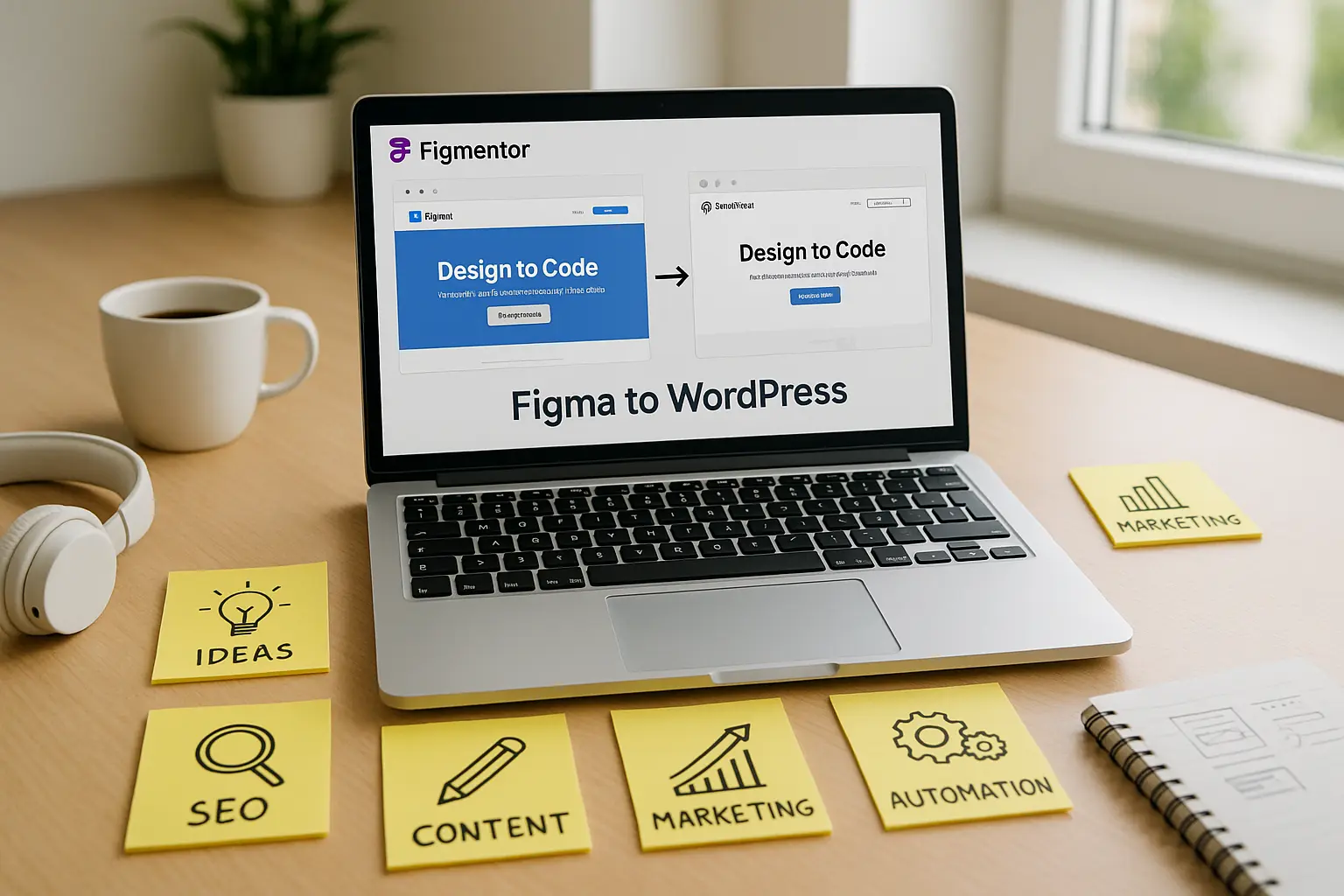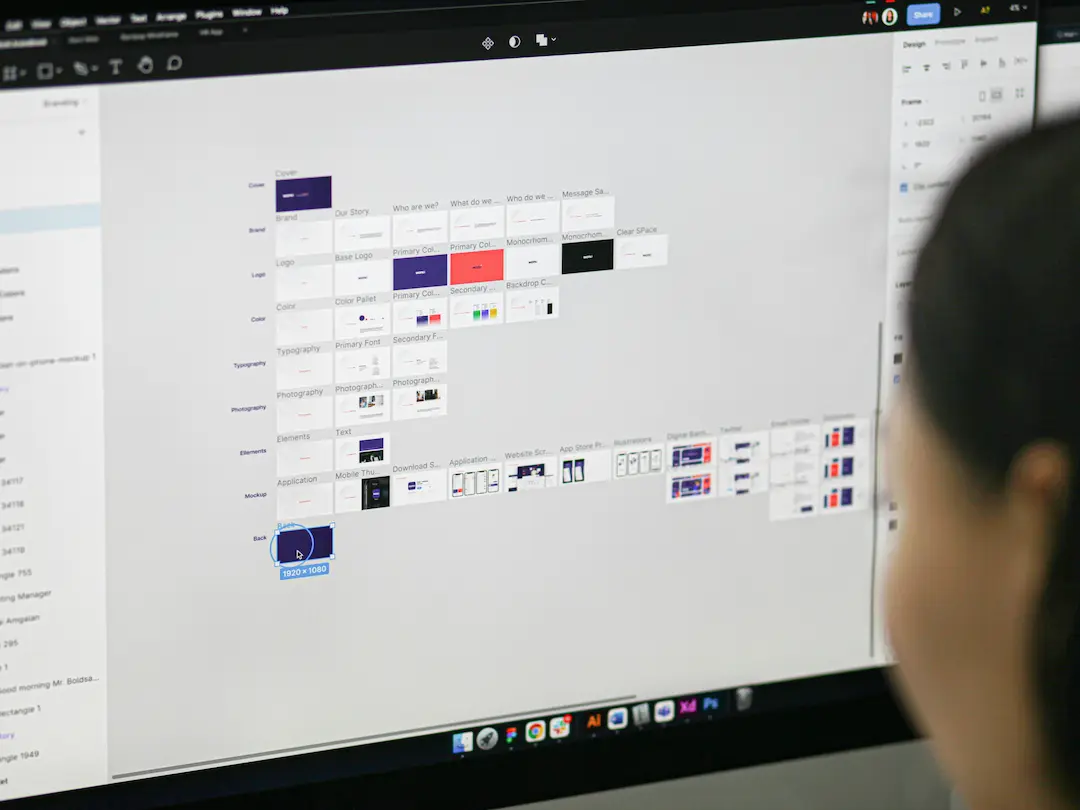Introduction
Designing beautiful websites in Figma has become second nature to modern designers. But translating those designs into live, interactive Elementor templates for WordPress often feels like a tedious handoff - unless you use the right tools and workflow.
In this guide, we’ll show you how to go from Figma to Elementor templates without writing a single line of code, while preserving pixel-perfect design and responsiveness.
Why Go from Figma to Elementor?
Figma for Design
Figma is loved for its collaborative, fast, and precise interface design. It’s where creative ideas come to life.
Elementor for WordPress
Elementor is the most popular page builder for WordPress, giving non-coders full control over site building. Combining Figma’s design power with Elementor’s flexibility creates a smooth design-to-live-site pipeline.
Benefits of this workflow:
- Speed up development
- Reduce errors during handoff
- Achieve accurate design implementation
- Enable client edits via Elementor’s visual editor
The Traditional Workflow (And Its Limitations)
Manual Development
Traditionally, turning Figma into a WordPress site means developers recreate the layout using Elementor, matching styles manually. This is:
- Time-consuming
- Prone to inaccuracies
- Hard to scale
Plugins that Promise but Don’t Deliver
Several “Figma to WordPress” plugins exist, but few maintain design fidelity or generate reusable Elementor templates (.json files).
Modern Workflow - Convert Figma to Elementor Templates (No Code)
Here’s the high-conversion workflow we recommend:
Step 1 - Design Smart in Figma
Use auto-layouts, constraints, and consistent spacing. Name layers properly. Treat your Figma file as if you’ll hand it to a developer - or better, an automation tool.
Step 2 - Use a Converter Tool (Like Figmentor)
Tools like Figmentor let you:
- Select a Figma frame
- Convert it into an Elementor-compatible
.jsontemplate - Export and import it directly into WordPress
- Maintain responsiveness and layout integrity
- Customize further inside Elementor
Figmentor supports:
- Buttons, images, text blocks
- Flex containers and sections
- Font and color variables
- Responsive layouts
💡 Pro Tip: Make your Figma design match Elementor’s structure - use frames as sections, and components as reusable widgets.
Step-by-Step: Figma to Elementor Template with Figmentor
Step 1: Design your website frame in Figma
Keep it clean, labeled, and sectioned clearly.
Step 2: Install and run the Figmentor Plugin
Available in the Figma community.
Step 3: Select the frame to export
Figmentor will parse the layout and convert it into Elementor widgets.
Step 4: Download your Elementor template file (.json)
You’ll get a ready-to-import JSON file.
Step 5: Import into Elementor (WordPress dashboard)
Go to Elementor → Templates → Import Templates → Upload your JSON file.
Step 6: Customize and publish
All components are now editable within Elementor. You can adjust content, colors, and layouts with full flexibility.
Advanced Tips for Pixel-Perfect Results
- Stick to a 12-column grid in Figma, matching Elementor’s responsive grid system
- Use auto-layouts and constraints for responsive behavior
- Use Figma styles for text and colors to map to Elementor’s global styles
- Avoid using overlays or effects that can’t translate easily
- Use named components to prepare for reusable Elementor widgets
Export Best Practices
- Export desktop-first
- Check mobile responsiveness inside Elementor
- Use global widgets and templates for reusability
- Leverage Elementor’s theme builder for headers/footers
Common Mistakes to Avoid
| Mistake | Fix |
|---|---|
| Using images without alt text | Add alt text inside Elementor |
| Unnamed Figma layers | Name all sections, buttons, and frames clearly |
| Complex vector graphics | Simplify or convert to image files |
| No consistency in spacing | Use consistent spacing rules in design |
Final Thoughts
Converting Figma designs into Elementor templates doesn’t have to be a manual headache. With the right design discipline and a tool like Figmentor, you can transform your creative work into functional WordPress websites in minutes - ready for clients, agencies, or personal projects.
FAQ
Can you convert Figma directly to Elementor templates?
Yes, using tools like Figmentor, you can convert Figma frames directly into Elementor-compatible JSON templates, ready for import.
Is Figmentor free?
Figmentor offers both free and premium plans depending on usage limits and advanced features.
Do I need to code to convert Figma to WordPress?
No. With modern tools, you can go from design to deployment without any HTML or CSS coding.
How accurate is the Figma to Elementor conversion?
If your Figma is structured well, the conversion is typically 90–100% accurate, preserving layout and style.
Does it support mobile responsive designs?
Yes. If you use auto-layout and constraints in Figma, responsive behavior translates well into Elementor.




